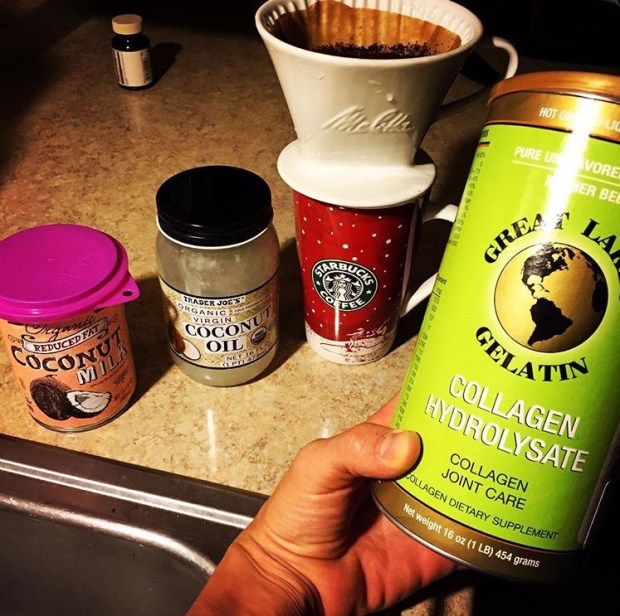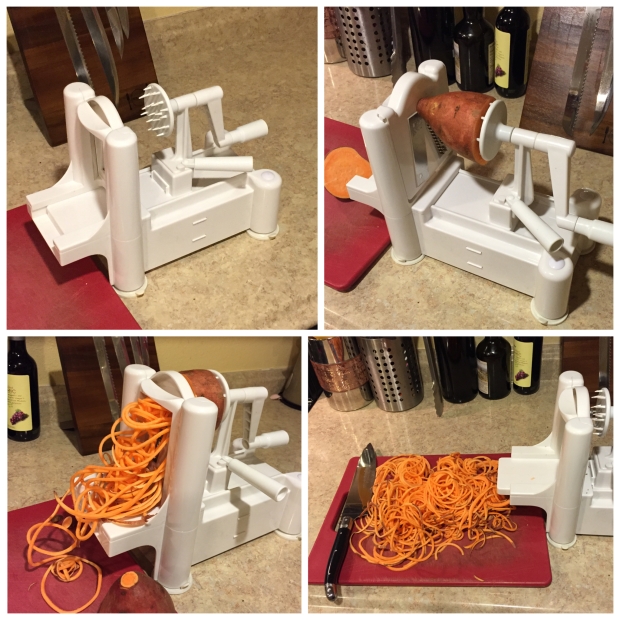This week’s peak into my daily nutrition features my non-dairy version of bulletproof coffee. For those that aren’t familiar with bulletproof coffee, it’s essentially a mixture of coffee, MCT oil and grass fed butter that was made popular by Dave Asprey. The idea behind this concoction is that it keeps you satiated longer unlike many common breakfast foods (i.e. cereal, doughnuts, bagels). Also, some people say that the MCT oil, which is a source of energy itself, can prolong the caffeine effect of coffee. Either way, as someone that makes a conscious effort to get the majority of his calories from fat, this seems like a good idea, but I can’t handle that much dairy right when I get up. Which is why I was ecstatic when I learned about a non-dairy version of the upgraded coffee during our interview with Anna Vocino on the Addicted to Fitness podcast. I’ve been using this recipe almost every morning for the last 3 months and I’ve had no problems, and unlike bulletproof coffee, this recipe contains a significant amount of protein. Give it the once over and let me know if you prefer it over the traditional bulletproof coffee recipe.
Recipe
1/3 cup of Trader Joe’s Reduced fat canned coconut milk (90 calories, 9g of fat, 1g of sugar)
1 tbsp of Trader Joe’s Coconut oil (120 calories, 14g of fat, 0g of sugar)
2 tbsp of Great Lakes Collagen Hydrolysate (45 calories, 11g of protein)
12 ounces of black coffee (>2 calories)
*Pour all ingredients in a blender or shaker bottle and combine till well mixed
= 317 calories, 30 g of fat, 11 g of protein and 1g of sugar

Thanks to author Anna Vocino for providing this recipe






